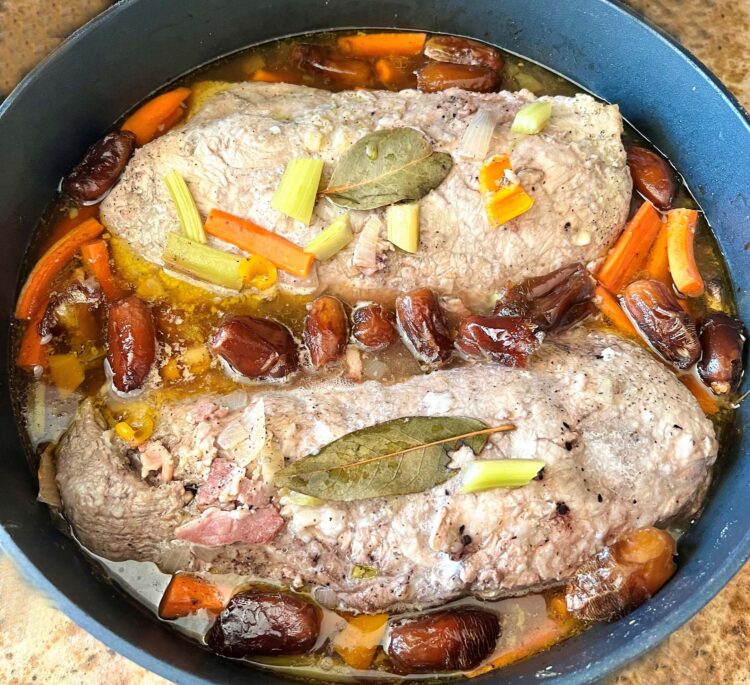Sauvignon Blanc Food Pairing Suggestions

Which foods pair best with Sauvignon Blanc?
Sauvignon Blanc is a quintessential white wine calling for white meats (from fish and shellfish to chicken and pork). The wine’s typically crisp acidic edge and moderately medium weight does not lend itself to anything beyond that (it does not “cross over” into red meats).|
The lean taste profile of Sauvignon Blanc also does not lend itself well to dishes containing disproportionate amounts of butter or cream (use only with balancing ingredients like lemon and capers, lest the wine turns unpleasantly sharp and the dish too fatty or oily). While the finest Sauvignon Blancs are replete with qualities of sweet melon (and sometimes citrus or fig), the varietal’s propensity towards nuances of green herbs, cut grass or weeds in the aroma and flavor make it a natural with dishes utilizing leafy green herbs (parsley, basil, chervil and cilantro), and to a more limited extent, the more strongly scented herbs (rosemary, thyme, marjoram and oregano).
By the same token, herb nuanced Sauvignon Blancs do well with dishes utilizing bell peppers (especially when roasted), olives, fennel, spinach, watercress, arugula, and most green leaf salad vegetables. Restrained use of aromatically similar chili peppers (most varieties) as well as chili spices, pastes and curry mixes all stand to benefit from Sauvignon Blanc’s contrasting qualities of moderate alcohol, palate-freshening acidity, and suggestions of melon in the nose and flavor. Restrained use of lemon, citrus, pomegranate, tomatoes and other acidic fruits underscore Sauvignon Blanc’s zesty acidic qualities.
Besides Chèvre, other mildly acidic cheeses (Greek Feta, Le Banon from France, Cabrales from Spain, Pecorino from Italy, and extra sharp Cheddars) work well with Sauvignon Blanc. Feel free to grill or smoke, as this brings out the minerally or flinty qualities of Sauvignon Blanc (especially the French versions).
While Sauvignon Blancs can certainly work well with richer, fattier white meats (lobster, pork, whole chicken, etc.) with the use of complimenting ingredients, its moderately weighted, crisp quality is more naturally suited to lower fat seafood or white meats (oysters, clams, flaky white fish, chicken breasts, veal, etc.).
Sauvignon Blanc is one of the few varietals that handily match mild vinegars (particularly winy balsamic, sherry and rice wine vinegars). But these ingredients still need to be used in balance lest the match turns into an exercise in sourness (in the dish as well as wine).
Since salt is more easily balanced by sweetness, don’t expect bone dry Sauvignon Blancs to work like a charm with highly salted or cured foods. For the same reason (the grape has tartness, but not sweetness), use pickled vegetables with caution.
If Sauvignon Blanc is indeed a food versatile grape, it does not cross easily into the realm of Asian foods (use of ginger, star anise, shoyu, kaffir, ponzu, and disproportionate use of sugar, garlic, etc.). Better to leave that to more fragrant or aggressively spiced varietals (i.e. Riesling and maybe Viognier among whites, and Pinot Noir and Syrah among reds).
> Check out GAYOT’s Best Sauvignon Blanc list.
| > More Successful Sauvignon Blanc Food Pairings |
| • Spring green salad with chèvre and citrus in a caramelized bell pepper vinaigrette |
| • Fresh snapper ceviche with tequila, lime and roasted sweet peppers |
| • Grilled marinated prawns with fresh melon salsa, matched with a light, mildly crisp and easy Fetzer Sauvignon Blanc |
| • Quenelles of lobster, scallops and leeks in a shiitake shellfish consommé |
| • Risotto of lobster and sea vegetables with English peas and asparagus |
| • Wood-grilled Anaheim chile stuffed with shrimp, mint and red pepper couscous |
| • Spicy shrimp ravioli in a citrus achiote vinaigrette |




